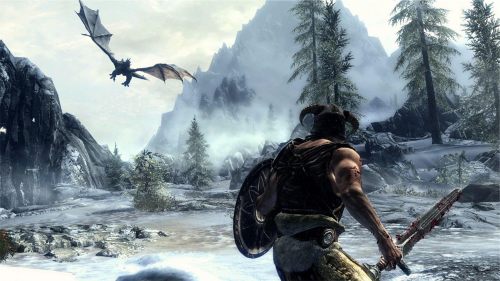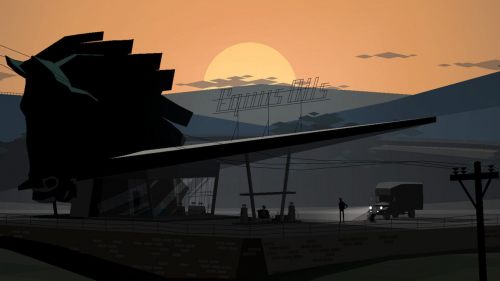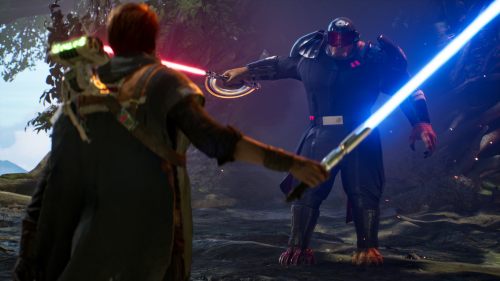THE WITNESS Will Give Your Brain Stockholm Syndrome
We didn’t run a review of The Witness when it first came out. That was our mistake.
But luckily, The Witness has had a staggered release schedule, and its recent Xbox One release means we get a second chance to talk about Thekla’s wonderful puzzle adventure.
On the surface, it’d be tempting to compare The Witness to Myst. Both take place on an unrealistically beautiful island; both revolve around puzzles; both hide mysteries that slowly reveal themselves (or do they?) as the game unfolds. But The Witness is at once a more conventional puzzle game than Myst and one that defies and subverts those same conventions, subtly teaching lessons larger than merely how to solve its puzzles.
So yes, you’re on an island. The island feels huge, but isn’t - its variety and density of biomes gives it the feel of an environment bigger than it really is. As you explore, you’ll discover jungles, a desert, a salt mine, immaculate gardens, a swamp, and more - all of them gorgeously rendered in pastel colours and charming, simple geometry. For the most part, you can poke around the environments in any order. But depending on where you go first, you might find yourself out of your depth with the puzzles you encounter.
The Witness’ puzzles aren’t of the environmental variety found in Myst or the recent Obduction. They’re not even physics puzzles like in Portal. Rather, The Witness’ puzzles are made up of gridded panels sitting amongst the scenery, and can be solved with as simple an action as tracing a line from point A to point B. Each area introduces a new symbol that can be found inside the grids, representing a new mechanic that must be incorporated into the solution. The puzzle mechanics start out on the grids and gradually move off them, incorporating a vast array of mechanics by the end of the game. Thanks to the nonlinear structure, there’s a real sense of discovery and progression when you get stuck on a puzzle whose mechanics you don’t understand, then later find a section that teaches them to you.
It’s The Witness’ unique approach to teaching that continues to impress long after playing it. Each section of the game introduces its concepts without uttering a single word, trusting that players will make the connections between the myriad elements involved. Using audio, visual, and physical cues, it teaches you how to learn - and how to fail. Part of the joy of The Witness lies in being confronted with puzzles you simply don’t understand, then accepting that you’ll learn how to do them at some future point in the game. The moments when a solution “clicks” in your brain for a puzzle halfway across the island are some of the best in the game, and they’re all thanks to the game’s gentle, non-judgemental approach to teaching. It’ll teach you a concept, make sure you understand it, then expand, invert, and reinvent it in new ways. Gosh, it's clever.
That The Witness' simple puzzle mechanic can be simultaneously so fiendish and elegant is a minor miracle. There’s also a moment somewhere along any given playthrough that reliably sends brains reeling, an expansion of the game’s central conceit that will have players constantly seeing Witness puzzles in real life. Some people may end up designing their own puzzles - such is the depth to which this game sinks its claws into brain stems. You'll love it, and you'll hate it for making you love it.
Though designed around its brilliant puzzles, The Witness tells a story, too - or at least, it gives players enough of a nudge to make up their own. Trying to piece together the esoteric audio tapes, mysterious environmental details, and pretentious [REDACTED] is more or less futile, but that’s not to say it can’t be fun as well. The ending, too, doesn’t tie anything together in a narrative way, instead bringing the puzzle-solving itself to a climax. But as surprising and dispiriting as it is to learn The Witness’ escalating puzzle complexity has an end point, it’s hard to fault the game for quantity - or quality - of content.
Designer Jonathan Blow was up against seemingly insurmountable pressure making The Witness, having designed the similarly clever indie megahit Braid some years prior. But Blow didn’t just meet expectations; he avoided them entirely, delivering a game that hides deceptive depth in its colourful environment. I still haven’t finished every optional challenge on the island - I mean, I’m not God - but I don’t feel bad about it. I know my limits.
Know your limits, everyone. They’re probably somewhere within The Witness.



